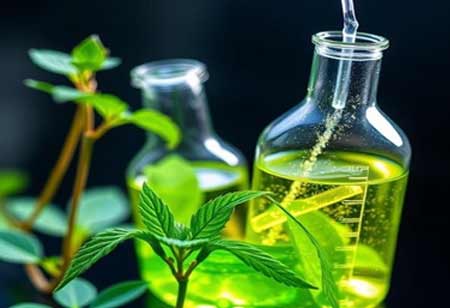Green chemistry reshapes industries and contributes to a more sustainable future by prioritizing sustainability, safety, and efficiency.
Fremont, CA: Green chemistry has emerged as a pivotal trend in addressing environmental challenges while fostering innovation. The paradigm shift aligns with growing societal demands for sustainability and corporate responsibility, making it a cornerstone of modern scientific and industrial advancements. The principles of green chemistry serve as a blueprint for environmentally conscious innovation. For instance, preventing waste generation at the source eliminates the need for costly treatment and disposal, aligning economic and environmental goals.
Climate Change Mitigation: An Essential Catalyst for a Sustainable Future
One of the most significant drivers of green chemistry is the global push to mitigate climate change. Historically associated with high greenhouse gas emissions, the chemical industry is now under pressure to transition toward carbon-neutral operations. Green chemistry offers solutions such as utilizing bio-based feedstocks, developing carbon capture technologies, and improving energy efficiency in chemical reactions. For example, advancements in catalysis have enabled the creation of efficient reactions that require less energy and produce fewer byproducts, directly contributing to reduced carbon footprints.
Harnessing Renewable Resources
Incorporating renewable resources is another hallmark of green chemistry. Traditional chemical production often relies on fossil fuels, which are finite and environmentally detrimental. Green chemistry seeks alternatives by utilizing biomass, agricultural waste, and other renewable resources as feedstocks. The pharmaceutical industry has embraced green chemistry to address sustainability and economic efficiency. Traditionally, drug synthesis involves complex multi-step processes that generate significant waste. Companies have streamlined these processes by applying green chemistry principles, reducing waste, and improving yields.
Green chemistry is equally vital in the development of safer materials and chemicals. Many conventional chemicals pose risks to human health and ecosystems due to toxicity, persistence, or bioaccumulation. Designing inherently safer chemicals minimizes these risks while maintaining functionality. Developing non-toxic flame retardants and safer solvents showcases how green chemistry principles can enhance product safety without compromising performance.
Challenges to Adoption: Barriers to Green Chemistry
The widespread adoption of green chemistry faces challenges. High initial costs, limited availability of renewable feedstocks, and regulatory hurdles often deter companies from fully embracing sustainable practices.
Transitioning to green chemistry requires substantial research and development investments and cross-sector collaboration. Addressing these barriers requires robust policy frameworks, financial incentives, and educational initiatives to promote the adoption of green chemistry across industries. Integrating process intensification techniques, such as continuous flow chemistry, enhances efficiency and scalability, making green chemistry solutions more accessible to enterprises of all sizes. As consumers increasingly prioritize sustainable products, indu

